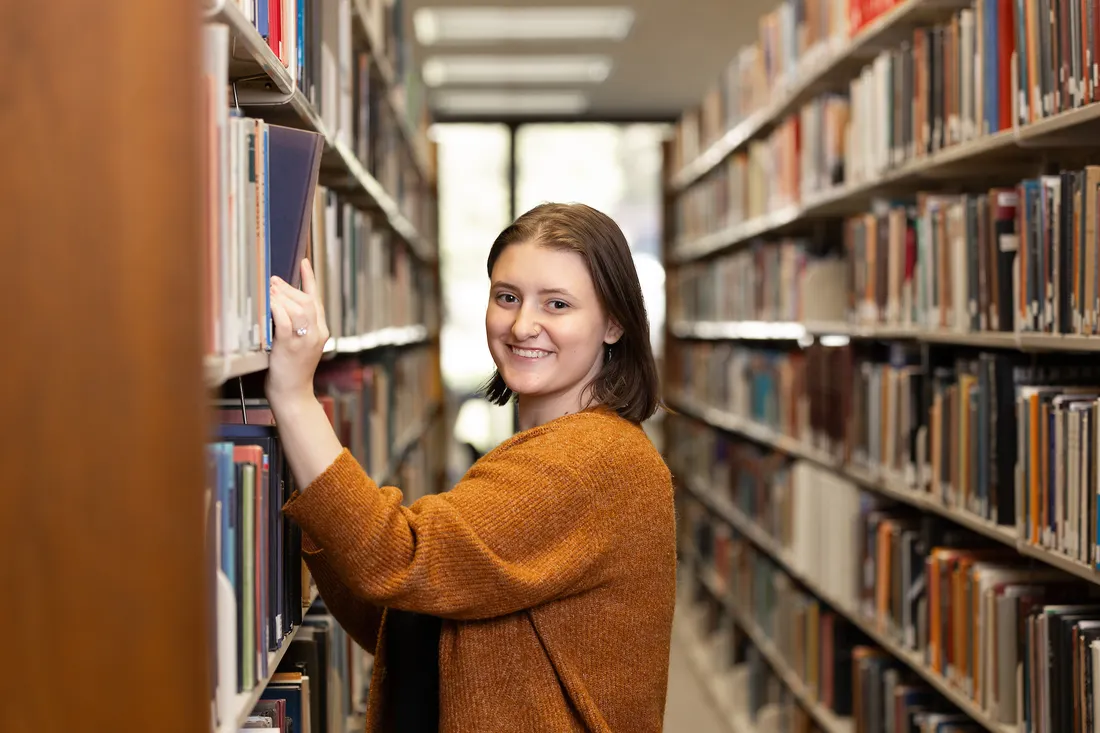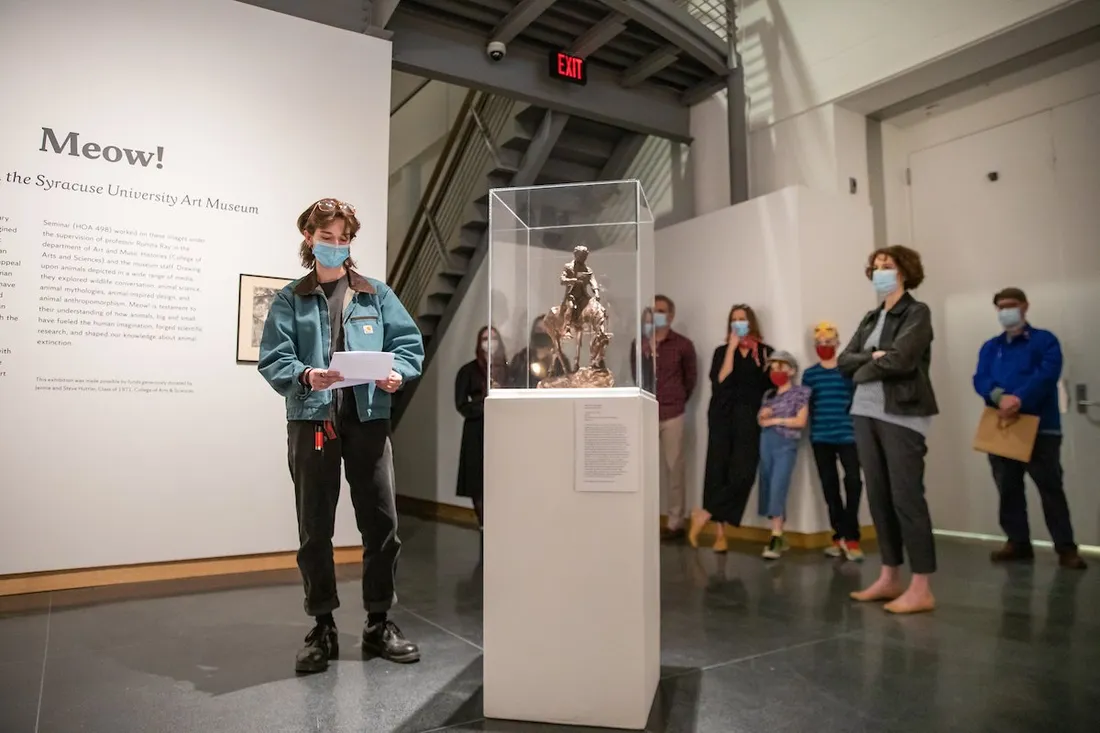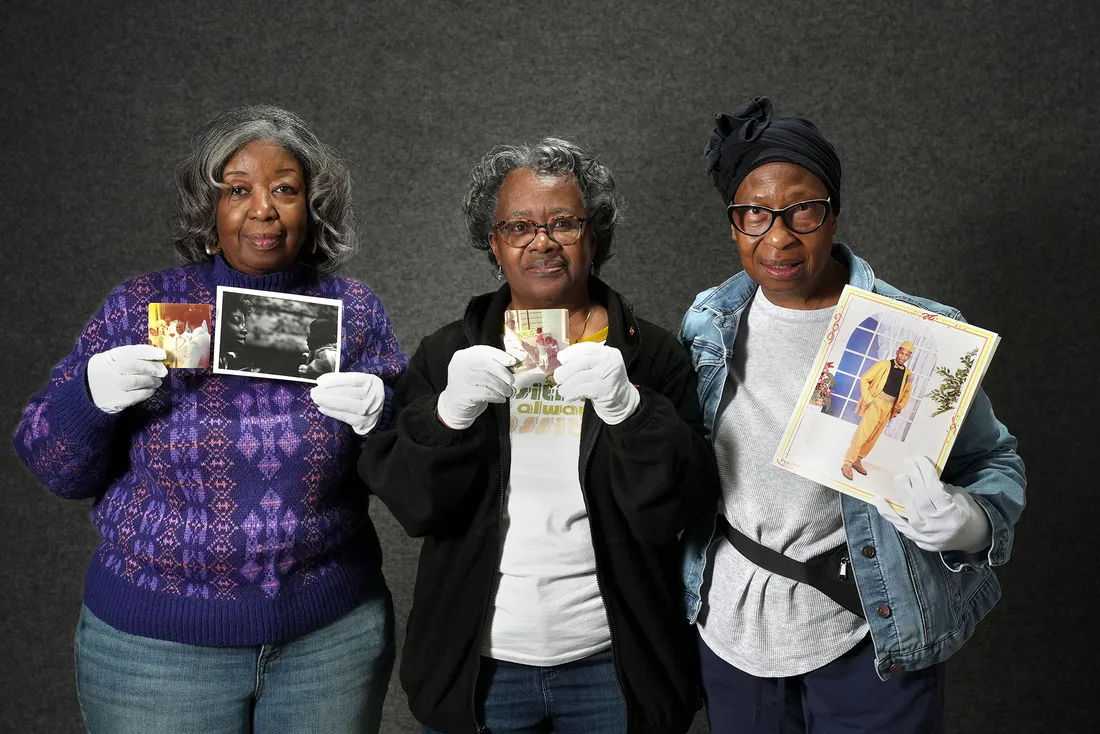
Francina Terry (left), Sherri Redden (center) and Carolyn Rice display family pictures that they brought to the Family Pictures Syracuse event. Photo courtesy of Turning the Lens Collective.
Last October, Syracuse community members arrived at the Everson Museum of Art with family photographs and shared stories about them as part of Family Pictures Syracuse. It was the inaugural community event of the Turning the Lens Collective, a long-term social justice project that seeks to build a living digital archive of photographs, videos and stories gathered from Syracuse’s communities that have been overlooked in the archives and public narratives of local history.
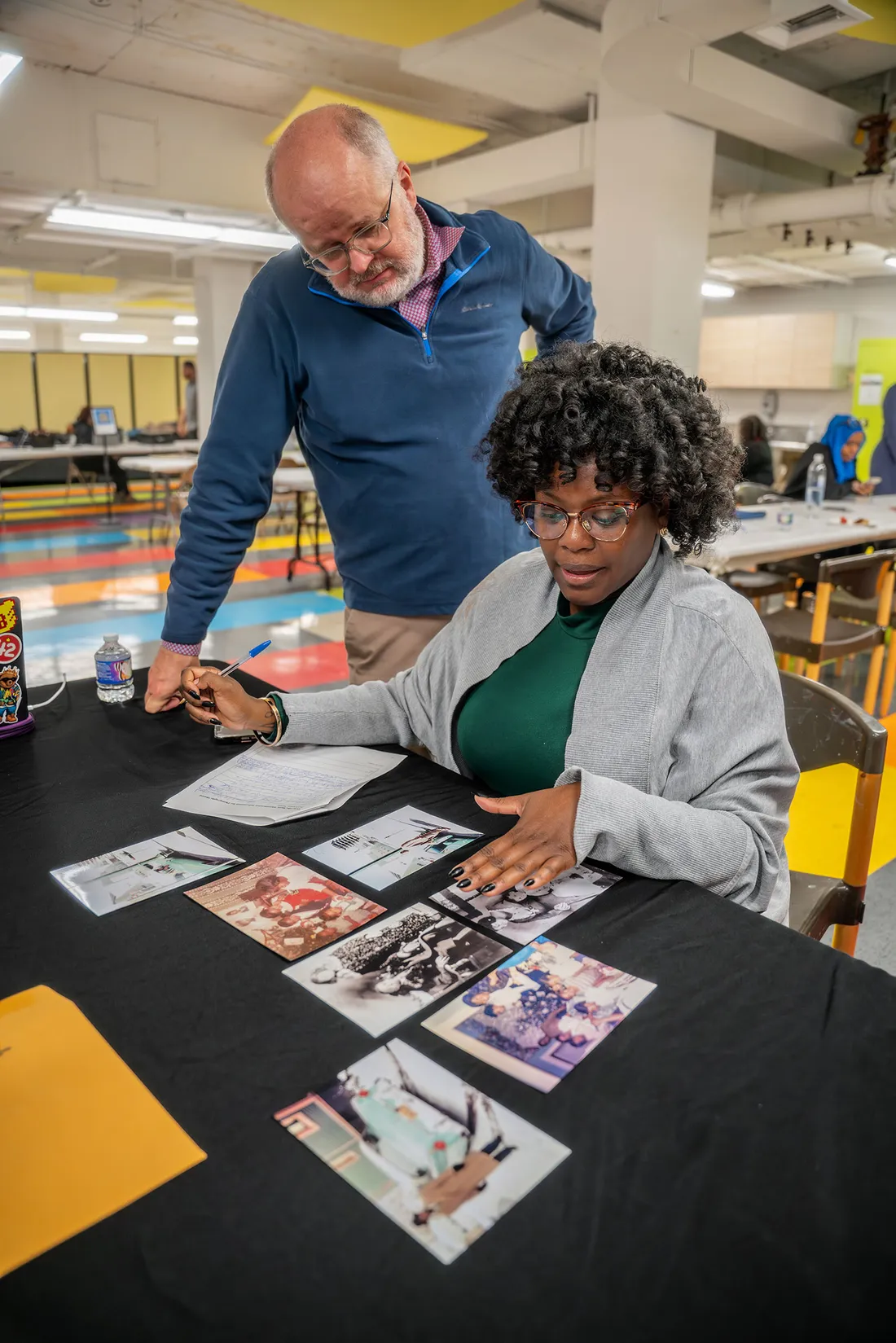
English professor Roger Hallas and history doctoral candidate Jessica Terry-Elliott review images at Family Pictures Syracuse.
Through its partnership with Syracuse University Libraries (SUL), the project will work with New York Heritage Digital Collections to make this unique, digitized local history available to the public, students and scholars. With the fiscal and organizational support of the College of Arts and Sciences’ Engaged Humanities Network (EHN), the project began as a collaboration between the Syracuse University-based Turning the Lens Collective and the Family Pictures Institute for Inclusive Storytelling, founded by documentary filmmaker and Yale University professor Thomas Allen Harris.
For the members of the Turning the Lens Collective—English professor Roger Hallas; history doctoral program candidate Jessica Terry-Elliott; English doctoral program candidate Caroline Charles; English and textual studies, digital humanities and psychology major Aniyah Jones ’26; and policy studies major Sarhia Rahim ’25—the idea for the project sprung from two inspirations: Harris’ 2014 documentary film Through a Lens Darkly: Black Photographers and the Emergence of a People and a family photo display in the 2023 exhibition A Love Supreme: Black Cultural Expression and Political Activism of the 1960s and 1970s, which Terry-Elliott and Charles curated in collaboration with staff from SUL’s Special Collections Research Center (SCRC).
The project embraces an interdisciplinary and collaborative approach. Hallas, Terry-Elliott and art photography professor Doug Dubois incorporated the project into classes this past semester. “It was a great experience for the students, and the stories are so compelling,” Dubois says.
Celebrating Families and Community
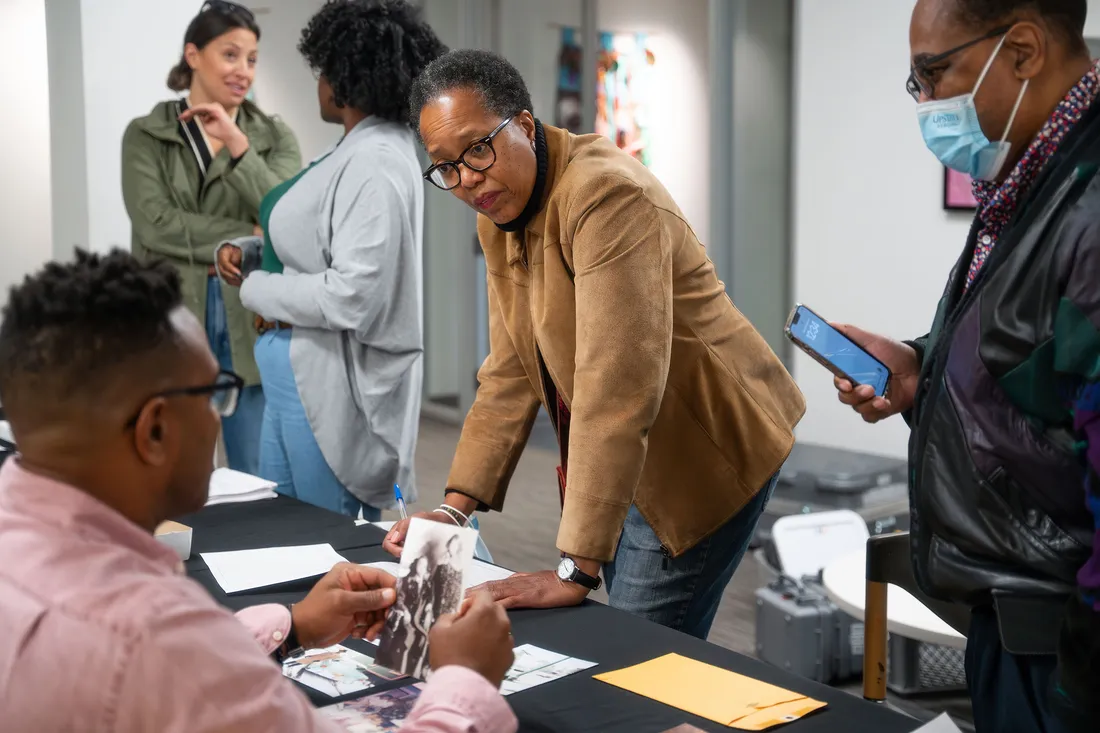
At the Family Pictures Syracuse check-in station at the Everson Museum of Art, Thomas Allen Harris (left) reviews photographs that cousins Patricia and Doug Clark brought to share.
Thomas Allen Harris and his Family Pictures Institute team of photographers and videographers worked with Syracuse University teams—including art photography students and Orange Television Network student journalists—to capture images and stories. “It’s so important to have the stories of families that go back generationally,” Harris says. “They have the stories of neighborhoods, churches, synagogues and communities, so they really tell a grassroots story of a place, and they also show the interconnectedness between communities.”
Capturing the Stories Behind the Photographs
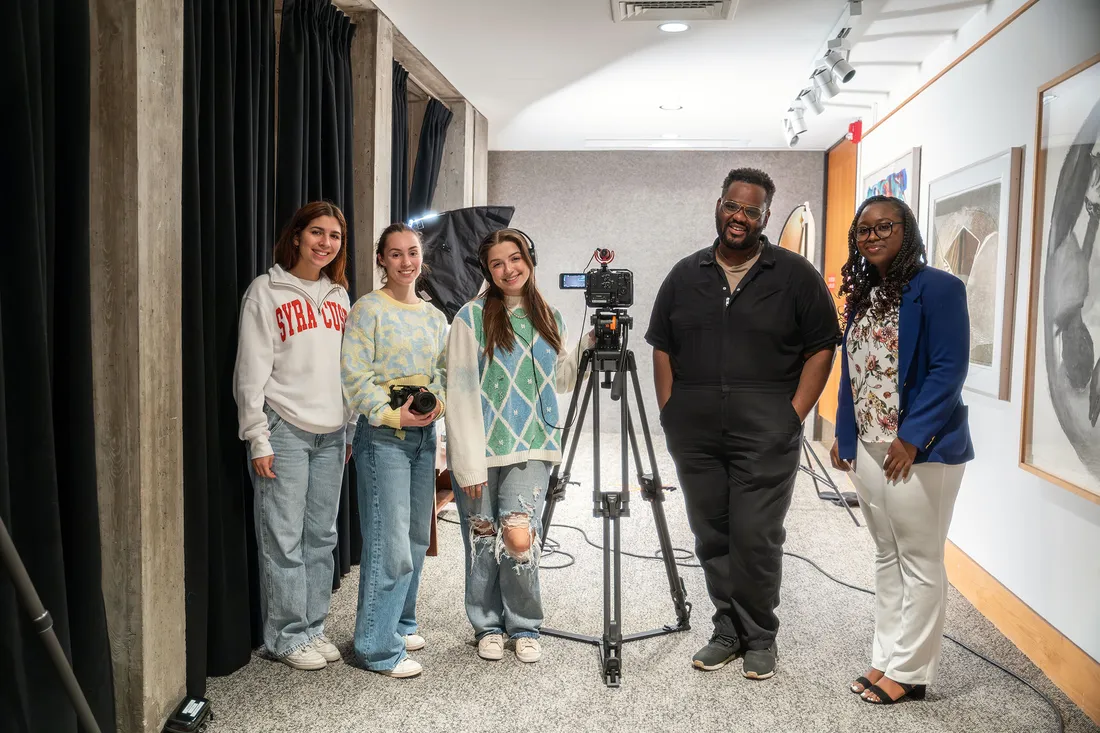
Among the students and recent graduates who worked at Family Pictures Syracuse were (from left to right) videographer Chelsea Sanchez ’27, photographer Natalia Claas ’23, videographer Annaliese Pillitteri ’27, interviewer Rayshaun Sandlin G’24 and Aniyah Jones ’26, who was interviewed by the team.
This Syracuse University team, featuring students and recent graduates of the S.I. Newhouse School of Public Communications and the College of Visual and Performing Arts, was among the teams conducting interviews at Family Pictures Syracuse. “I loved the reminder of how valuable photos and family history are, and that our roots are so important, particularly for those that exist on the margins,” says Rayshaun Sandlin, a recent graduate of the Goldring Arts Journalism program.
Creating a More Complete History of Syracuse
Jessica Terry-Elliott sees the work of the Turning the Lens Collective as an opportunity to fill a void of marginalized communities in Syracuse history. “It’s a hard history for some, but for others it’s a lived experience, so we have to find that medium,” she says. “This project provides us with that medium where we are not only celebrating family, but we’re celebrating the families that create the communities that then create the City of Syracuse. That’s how all of this comes together.”
Public sharing of family photographs generates an empowering space of social intimacy across difference, especially between generations. That’s an important experience for college students to gain.
Roger Hallas
Embracing a Community’s Historical Narratives
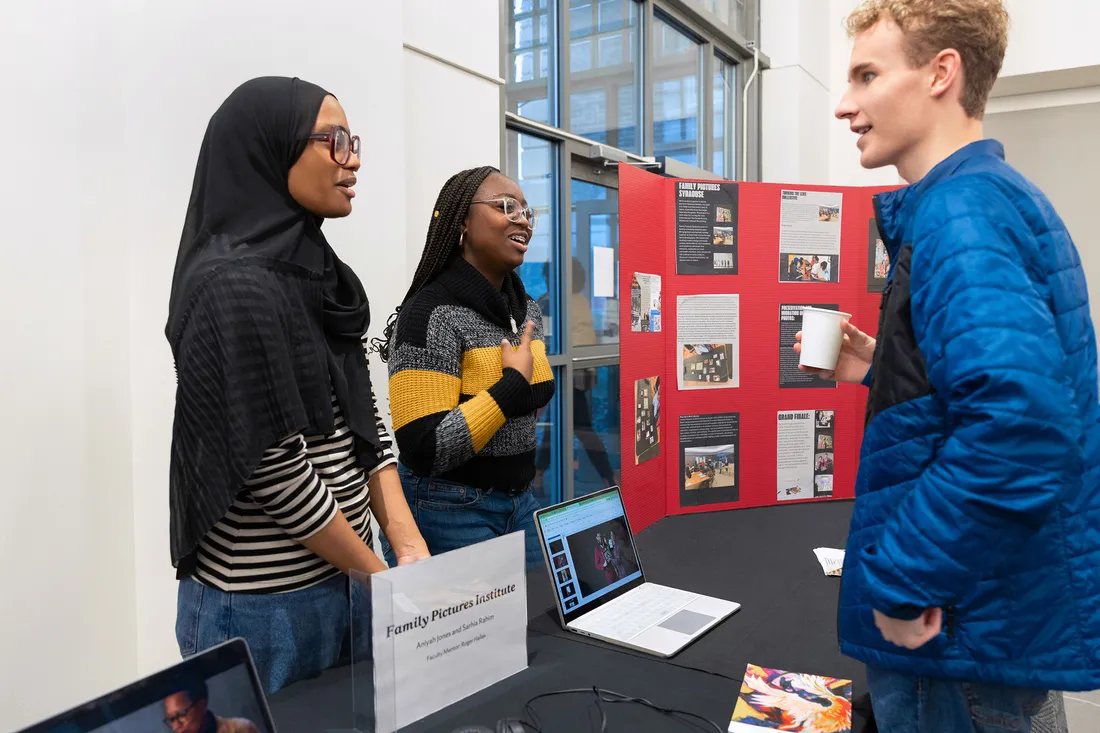
Sarhia Rahim ’25 (left) and Aniyah Jones ’26 discuss the project with a student during the Syracuse Office of Undergraduate Research and Creative Engagement (SOURCE) Fall Expo.
Sarhia Rahim and Aniyah Jones were inaugural research assistants for the project whose work was supported by a SOURCE grant. “I grew up here, I went to a public school here, and now I go to SU,” Jones says. “I just wanted to shed light on all the opportunities and the different histories and narratives that this community has to offer.”
As a policy studies major, Rahim believes understanding history is essential to enacting policy that creates social change. “Syracuse has a lot of gaps in its history,” she says. “I wanted to be part of the project because I think it’s important to share these historical narratives.”
With further support from SOURCE and EHN, Rahim and Jones will bring their experience from the project to new a program for local school students at the Dunbar Center in the fall and next spring that they’ve designed around the exploration of political empowerment and digital identities through images.
Highlighting the Black Photography of Special Collections
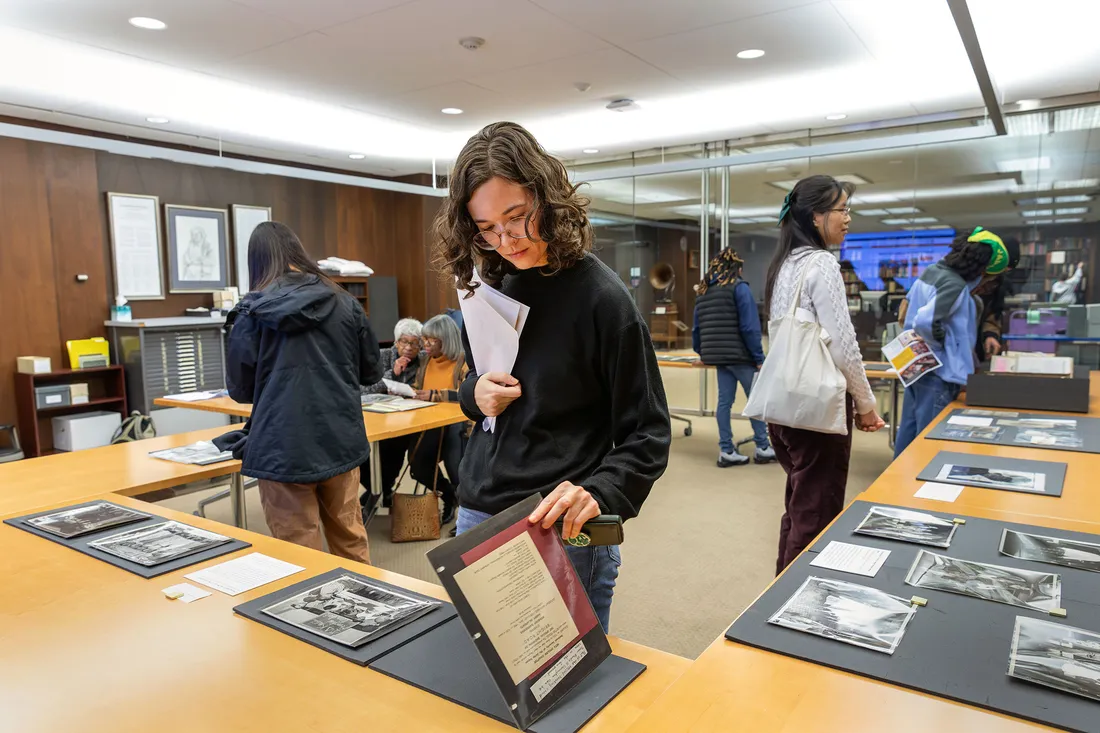
Visitors explore images at the SCRC exhibition.
In November, the Turning the Lens Collective and SCRC hosted Family Pictures in the Archive, a pop-up event that featured Black photography from the SCRC collections as well as advice for preserving personal photographs and doing genealogical research for family histories. “A lot of history can be told from people’s snapshots and personal collections,” says SCRC instruction and education librarian Jana Rosinski. “And within archives, especially, the representation and documentation of People of Color, historically, are underrepresented.”
Focusing on African Americans’ Everyday Life
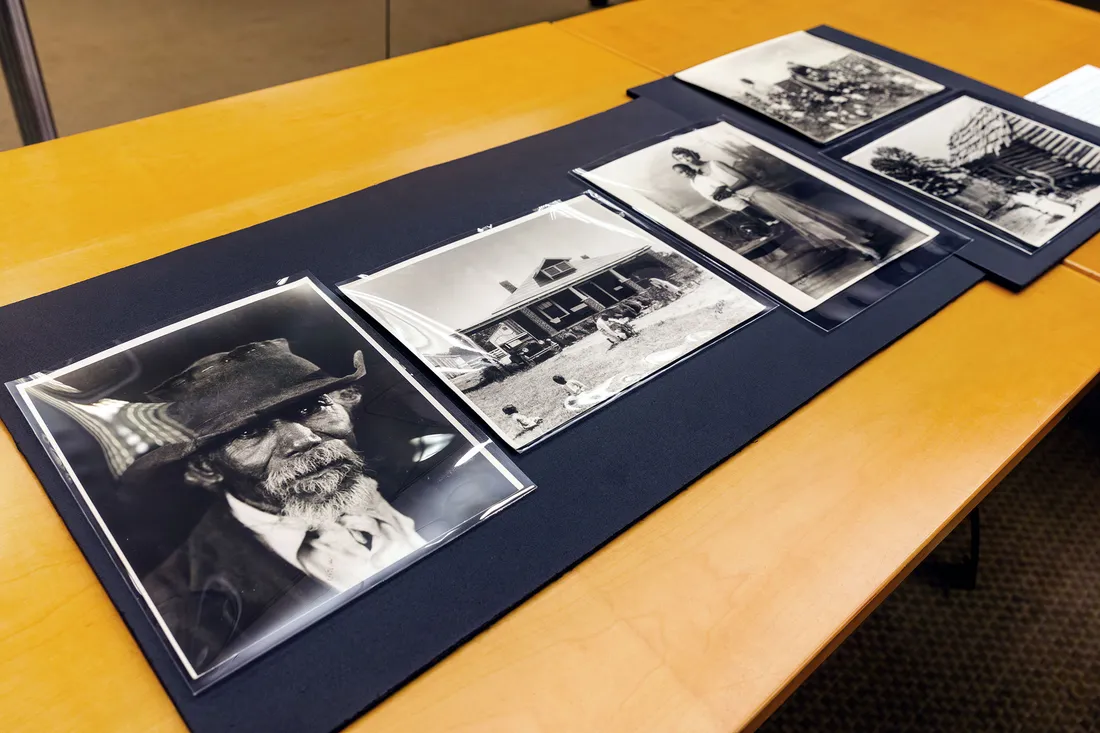
Many archival images contain little information about the subjects. The man pictured above is identified as “Mr. George Moore,” while the woman holding a child is identified as “Mrs. Cot and son.”
Among the displayed photographs were these images taken by renowned African American photographer Prentice Henry Polk. “These collections give you an idea of how African Americans were using photographs and cameras in everyday life, but also as a way to assert their presence in a way they could have control over,” Caroline Charles says.
Connecting Through Vernacular Photography
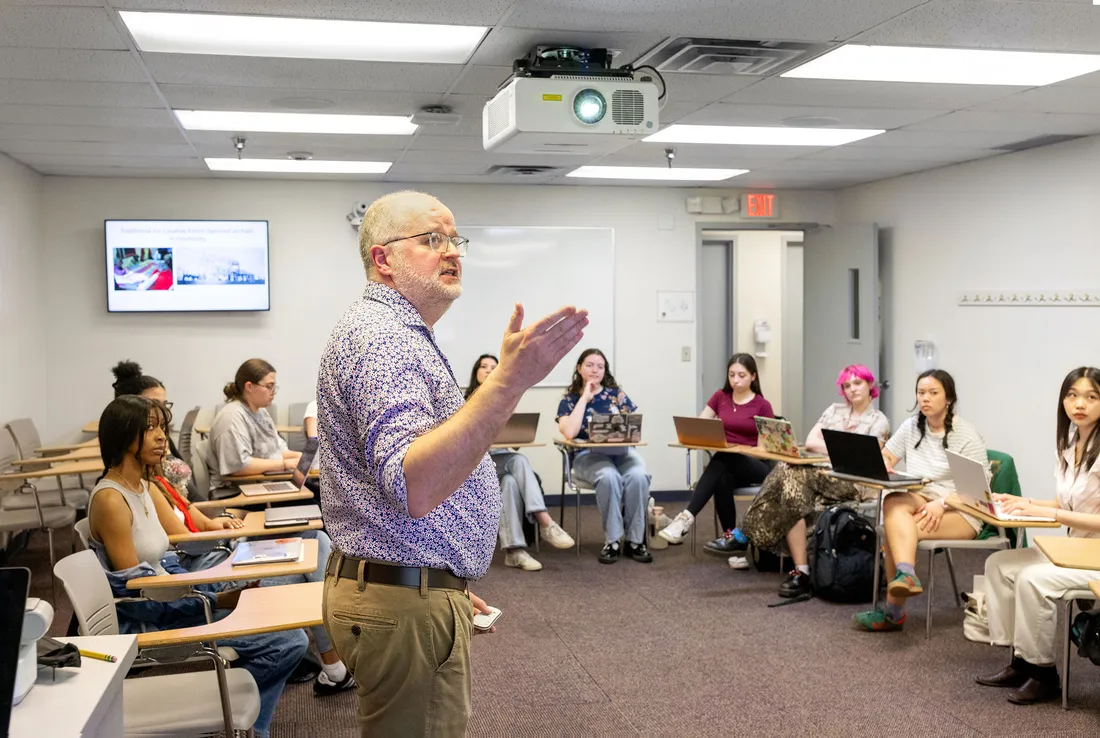
English professor Roger Hallas discusses an issue with students in his course Everyday Media and Social Justice.
In his course, Professor Hallas introduced students to vernacular photography and its role in social movements. As part of their work, they interviewed members of PEACE Inc.’s Foster Grandparent community program for a new project by the Turning the Lens Collective: Black Family Photography in Syracuse (BFPS). “This class has shifted the way I look at photography and think about the media and how it ties into social justice by being a voice for the voiceless and the marginalized,” says English major Ishika Bharadwaj ’24.
An expected grant from the New York State Archives’ Documentary Heritage Program will allow BFPS to expand its work with the Foster Grandparent program this fall and next spring at different locations in the city. Hallas believes it’s important for students to connect with the community and have intergenerational experiences. “U.S. public culture often marginalizes elders in terms of the diverse knowledges they hold and the unpaid labor they perform in sustaining family and community. Public sharing of family photographs generates an empowering space of social intimacy across difference, especially between generations,” he says. “That’s an important experience for college students to gain.”

